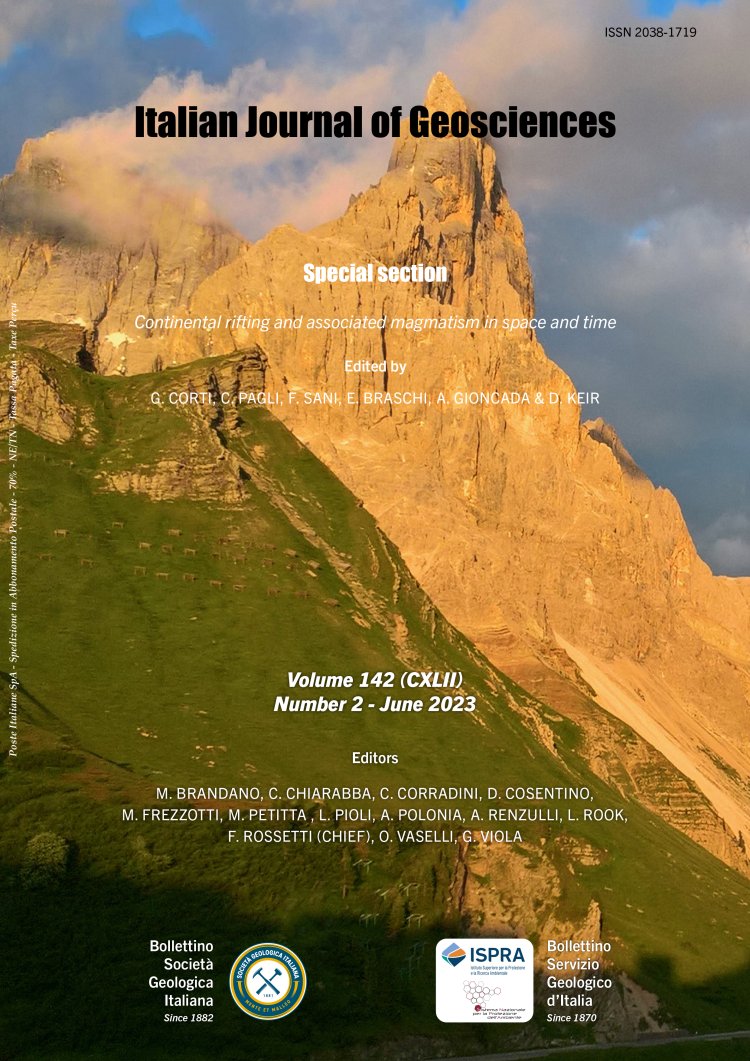
Insight into a rift volcanism with the petrogenesis of ultramafic enclaves and the host basalts: Kula Volcanic Field, Western Anatolia, Turkey
Erdal Şen1, Erkan Aydar1, Pınar Şen2 & Alain Gourgaud3
1Hacettepe University, Dept. of Geological Engineering, Beytepe, Ankara, Turkey, 06800.
2General Directorate of Mineral Research and Exploration, Mineral Research and Exploration Department, 06800, Çankaya/Ankara, Turkey.
3Univérsité Blaise-Pascal, UMR-CNRS 6524, Campus Universitaire des Cézeaux, 6 Avenue Blaise Pascal, TSA 60026 - CS 60026- 63178, Aubiere Cedex, France.
Corresponding author e-mail: erdals@hacettepe.edu.tr
Volume: 142 (2023) f.2
Pages: 291-315
Abstract
The Quaternary Kula Volcanic Field (KVF), located on an E-W trending Plio-Quaternary horst, consists of at least 80 scoria cones, associated fissural lava flows and maars. Volcanic activity is divided into three main stages as BI (ca. 2-0.9 Ma), BII (ca. 300-50 ka) and BIII (ca. 10-0.7 ka). The volcanic products of BII and BIII contain ultramafic enclaves. They are generally spherical or elliptical varying in size from <1 to <48 cm and some samples bear vesicles and glass. Based on modal mineralogy, the dominant enclave types are hornblendite, Cpx-hornblendite, while Phl-clinopyroxenite, wehrlite, plagioclase-bearing Cpx-hornblendite and Hbl-gabbro are subordinate. They occasionally represent adcumulate and/or mesocumulate textures. The alkaline host rocks are basanite, phonotephrite, trachybasalt, picrobasalt, and foidite in composition.
LILE (Rb, Ba, Sr, and Pb) and HFSE (Nb, Ta) concentrations of host rocks indicate an Enriched Within Plate Mantle source. Additionally, they have high Nb/La (>1.3), Nb/Y (>1.7), and Nb/U (>31) ratios, reflecting that crustal contamination is insignificant. Petrogenetic modelling shows that Kula enclaves and host rocks are probably originating from 3-5% partial melting of garnet and spinel-peridotite mantle source mixtures. Rb/Sr (0.03-0.10) and slightly high Ba/Rb (9.5-23) ratios for host rocks demonstrate the presence of amphibole and phlogopite in their source, while low Rb/Sr (0.01-0.09) and high Ba/Rb (18-115) reveal that amphibole is present in the source. Estimated T/P conditions of early crystallizations are between 19.5–9.5 kbar, 63–31 km, and 1260–1130 °C for host rocks and 18.3–11.1 kbar, 59–36 km, and 1324–1208 °C for the enclaves, which suggests that the crystallization might have taken place in the lithospheric mantle.
Keywords
Get Full Text Supplementary Material